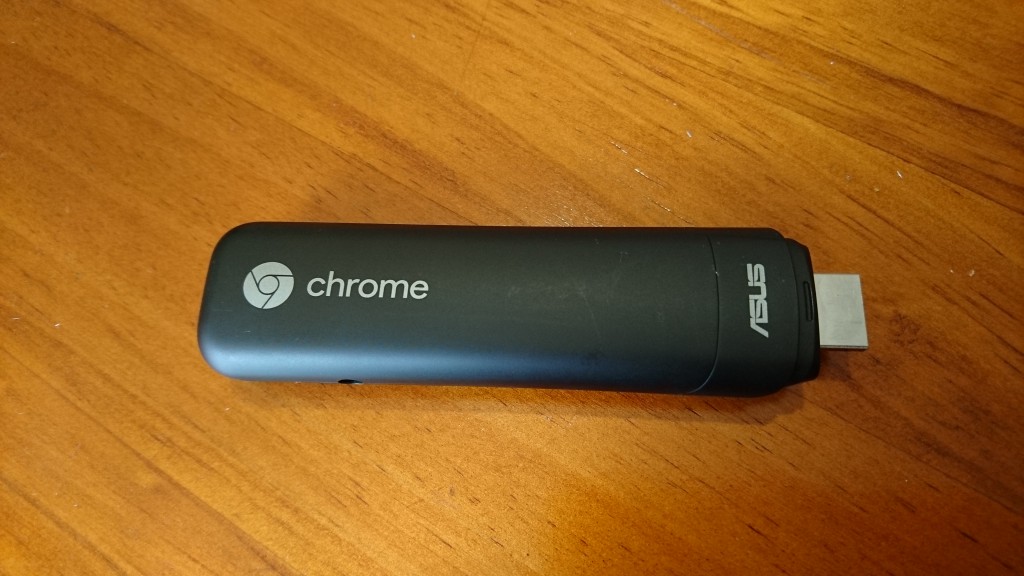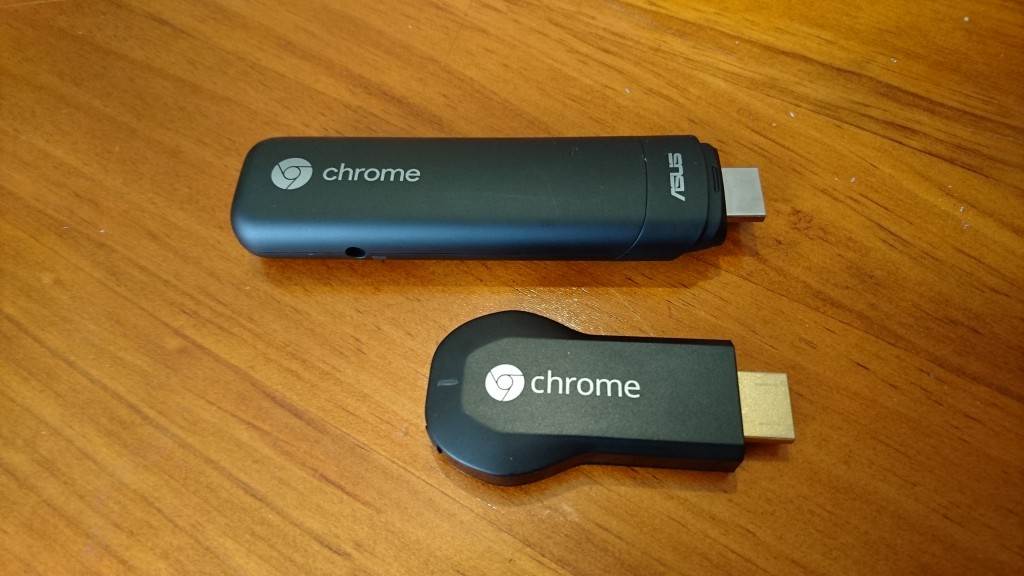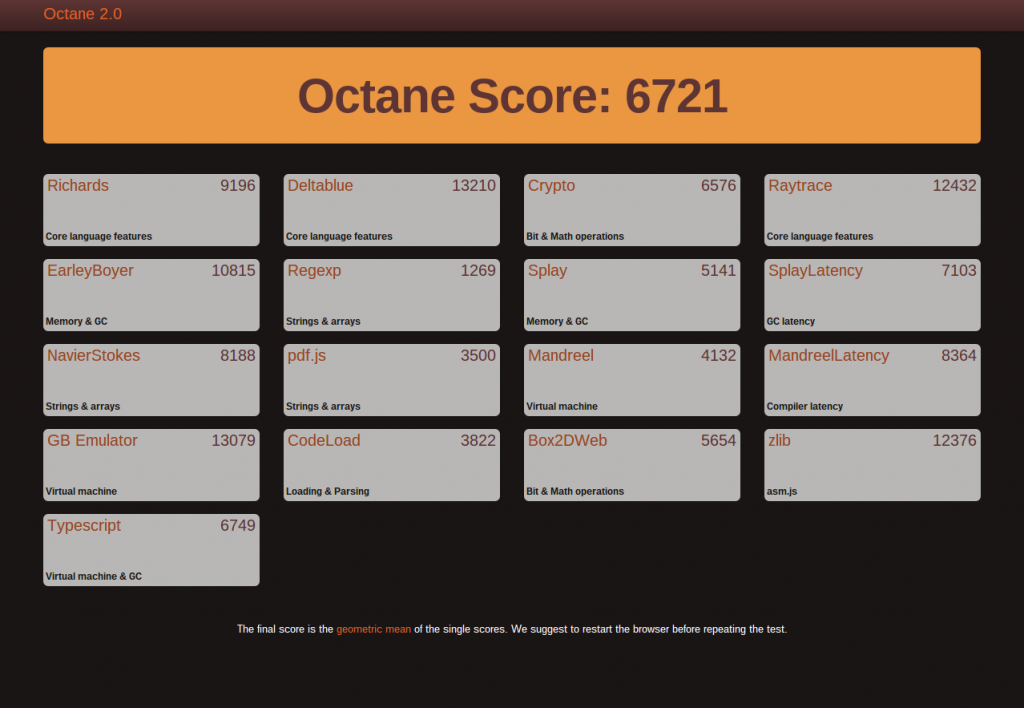
Chrome OS has been put onto many form factors since it was first introduced, laptops (Chromebooks), desktops (Chromeboxes and Chromebases) and now they’re invading the new stick computing trend that Intel first introduced, with the Asus Chromebit.
Since Google and Asus first announced the Chromebit, I’ll admit I’ve been lusting after it. What’s not to love? It’s a relatively cheap, simple, dongle sized computer that plugs into a HDMI port on a monitor or TV and gives you all the convenience of Chrome OS.
It’s taken Asus a while to bring the Chromebit to market – around 7 months from announcement to actually going on sale, so there was a fair bit of wondering in that 7 months where it was. Still, it’s now available and it’s time to work out if the Chromebit lives up to the hype.
- Seems underpowered
- Runs hot
- Not enough memory
- No headphone jack
Hardware and Build Quality
The Asus Chromebit is a good looking little dongle, if that’s possible to say. It’s well put together, there’s very little in the way of ports except the obvious HDMI jack on one end, there’s a USB port at the end and a hole to stick the power jack into, oh and you get a hole to loop a lanyard through if you want to hang it off one – that’s literally it.
It feels fairly weighty and well put together, but considering there’s a whole computer in the stick, it’s fairly impressive. The heft adds to a confidence that saw me throwing the Chromebit into my bag to take with me when I went to a hotel, or even just to work or away to Sydney for a day trip in case I managed to get a monitor or TV with HDMI, in the comfortable knowledge it wouldn’t disintegrate in the bag.
The Chromebit is quite sleek in design and with the USB port on one end, the HDMI jack on the other, it’s quite nicely symmetrical, but once you plug the power jack into the side, it starts looking a little like Frankensteins monster. There’s talk of other stick computers using MHL to power future generations and if this could be incorporated into the Chromebit it would go a long way to making it more usable.
The device itself has fairly underwhelming specs when it comes down to it though. The Asus Chromebit is powered by a Quad-Core ARM V7 Rockchip processor and comes with 2GB of RAM and 16GB of on-board storage. That’s pretty impressive given its size, which is about twice the size of a Chromecast, it’s not huge, but not diminutive.

It’s a fairly familiar spec except for the RockChip processor, something you’d expect to see in a Chromebook, but it’s the RockChip processor, which though cheap could be the issue for the Chromebit in the long run, because ultimately it doesn’t run fantastically – but well get to that later.
Connectivity
As well as the standard Chrome Device specs above, you’ll find Wi-Fi and Bluetooth in the Chromebit. The Wi-fi is 802.11 a/b/g/n/ac, but seems to be single band, not wanting to connect to my 5GHz network. The Bluetooth works fine, connecting to Bluetooth keyboards/mice and my bluetooth headset without complaint.
The Chromebit’s USB port is only USB 2.0 compliant, so there’s no high-speed data transfer to/from the device, it’s a bit of a disappointment, but not a deal killer. I plugged in a USB hub to the Chromebit and had a USB Keyboard and mouse and a USB drive in there with no issues, it was slower than the USB 3.0 speeds I was used to, but again, not a deal killer.
Sound
The big killer for me in terms of sound was a lack of 3.5mm jack to plug a set of headphones or even a speaker into. Sure you can connect Bluetooth headphones to it and they work Ok, but Bluetooth is never a solid replacement for a good set of wired speakers or headphones.
Performance
This is where the RockChip processor and 2GB of RAM really come into play. Size wise, it’s always going to be difficult to jam anything into a stick the size of the Chromebit and in terms of power, there’s really no room for fans, so you get what’s available and that’s a quad-core RockChip processor and 2GB of RAM – sadly it’s not enough.
The Chromebit stops and splutters and struggles with a couple of tabs open. If you run just a single tab you’re good to go, get above a few and you’ll run into issues.
I generally operate Chrome OS with around 5-6 tabs open as a bare minimum, the Chromebit struggles even with this, and seems to get worse the longer you use it and the heat starts to build up — and the Chromebit gets warm. After a 12 hour shift, it was pretty darn warm to the touch, which you can see here :
The Chromebit is definitely usable and at $159 you’re going to get good use out of it as a basic PC, but if you’re like me, you’re going to want more.
If you like benchmarks, here’s the Chromebit on Octane:

Software
Chrome OS doesn’t allow for any differentiation between vendors or from what Google builds for the devices. The Chromebit is kept up to date as usual by Google with updates rolling out to the device on average about every 6 weeks.
Google will give you around 5 years of life out of your Chrome OS device, this includes the Chromebit, so you should see some decent life out of your HDMI stick. Of course your Chromebit won’t get made obsolete without overnight even when that support ends, you just won’t get any new features or security features.
Asus Chromebit — Specifications:
- Rockchip Quad-Core RK3288C Processor with ARM Mali-T624 GPU
- 2 GB LPDDR3 at 1066MHz
- 16GB eMMC on-board storage
- 802.11 a/b/g/n/ac , Bluetooth V4.0
- 1x USB 2.0 port and 1 x HDMI Out
- Chrome OS
- 123x31x17 mm @ 75 grams
I want to love the Chromebit – I REALLY want to love the Chromebit, but I just don’t, but I do like it. As far as the Chromebit goes, this would be fantastic for companies wanting to make a digital display, or use as a basic Kiosk setup – but as a PC/Chromebook/Chromebox replacement, it’s just not powerful enough to use as a desktop replacement.
The Chromebit is definitely usable and I’ll probably end up grabbing one when they drop in price, but I just can’t justify spending the $159 on a Chromebit as it is. There is an option to import one from the US – Amazon will ship one here for about $125AUD – and at the lower price it makes it a more attractive option, but I do find myself looking at an Intel Compute stick running Linux or even Windows 10 and wondering if that may not be a better option.
The form factor of the Chromebit is a winner though, it hides surreptitiously behind a screen, happy enough to just work when required, and I think in a generation or two, the Chromebit could be a default piece of computing hardware for people to go to. I’ll be watching developments here with keen interest.









